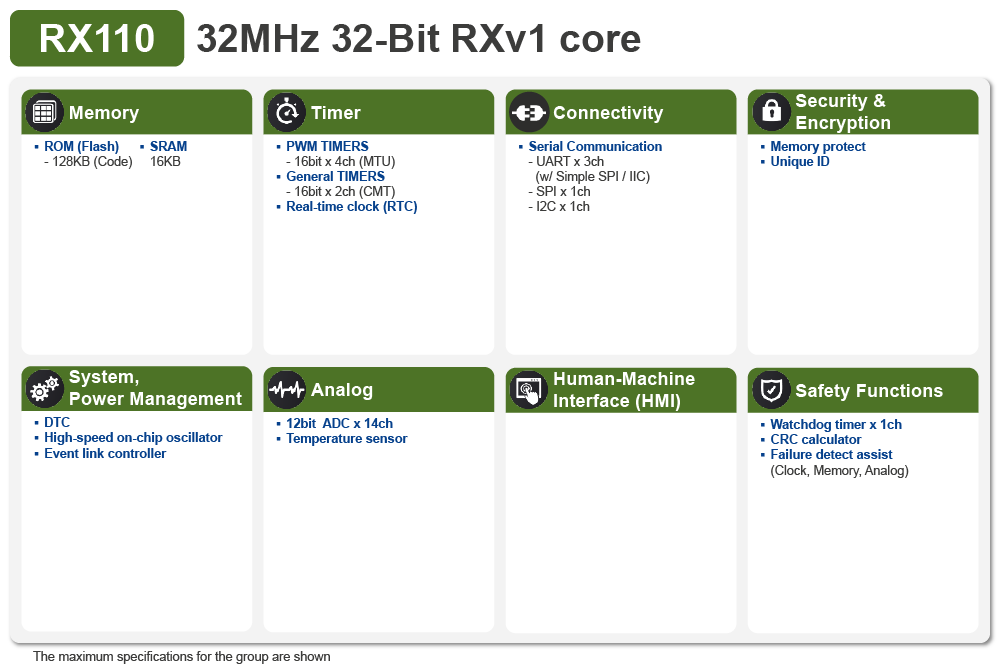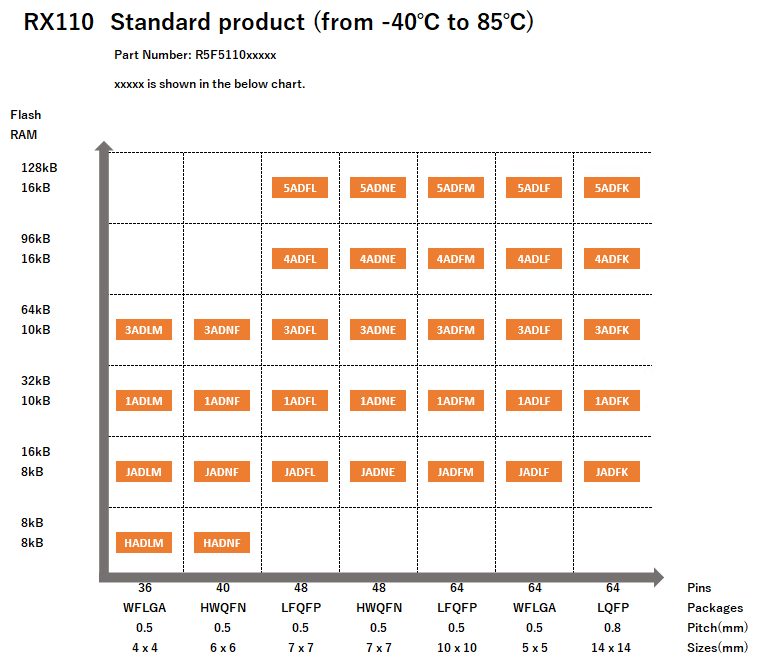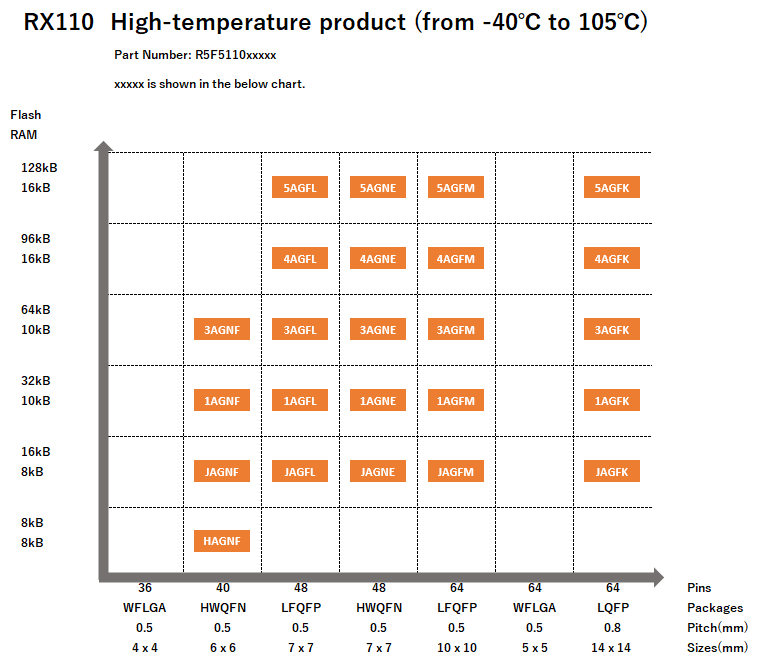Description
RX110 Group microcontrollers have the simplest lineup of the RX100 Series. They have a small-capacity, low pin count lineup from 8 KB/8 KB to 128 KB/16 KB ROM/RAM, and 36 to 64 pins. A 12-bit A/D converter, timer, serial interface, and more are built into a small 4 × 4 mm package. The RX110 is suitable for sensor hub and other applications where small size and processing performance are demanded.
Parameters
| Attributes | Value |
|---|---|
| Main CPU | RXv1 |
| Program Memory (KB) | 8, 16, 32, 64, 96, 128 |
| RAM (KB) | 8, 10, 16 |
| Carrier Type | Full Carton (Tray), Tray |
| Supply Voltage (V) | - |
| I/O Ports | 29, 36, 52 |
| DRAM I/F | No |
| Temp. Range (°C) | Ta = -40 to +85, Ta = -40 to +105 |
| Operating Freq (Max) (MHz) | 32 |
| Ethernet speed | No |
| Ethernet (ch) | 0 |
| EtherCat (ch) (#) | 0 |
| USB FS (host ch/device ch) | ( 0 / 0 ) |
| USB HS (host ch/device ch) | ( 0 / 0 ) |
| USB SS (host ch/device ch) | ( 0 / 0 ) |
| SCI or UART (ch) | 3 |
| SPI (ch) | 4 |
| I2C (#) | 4 |
| CAN (ch) | 0 |
| CAN-FD (ch) | 0 |
| Wireless | No |
| SDHI (ch) | 0 |
| High Resolution Output Timer | No |
| PWM Output (pin#) | 8 |
| 32-Bit Timer (ch) | 0 |
| 16-Bit Timer (ch) (#) | 6 |
| 8-Bit Timer (ch) | 0 |
| Standby operable timer | No |
| 12-Bit A/D Converter (ch) | 8, 10, 14 |
| 24-Bit Sigma-Delta A/D Converter (ch) | 0 |
| 16-Bit D/A Converter (ch) | 0 |
| 12-Bit D/A Converter (ch) | 0 |
| 8-Bit D/A Converter (ch) | 0 |
| Capacitive Touch Sensing Unit (ch) | 0 |
| Segment LCD Controller | No |
| Security & Encryption | Unique ID |
Applications
- Consumer (battery drive)
- Healthcare
- Home appliances
- Industrial
Applied Filters:
Loading





